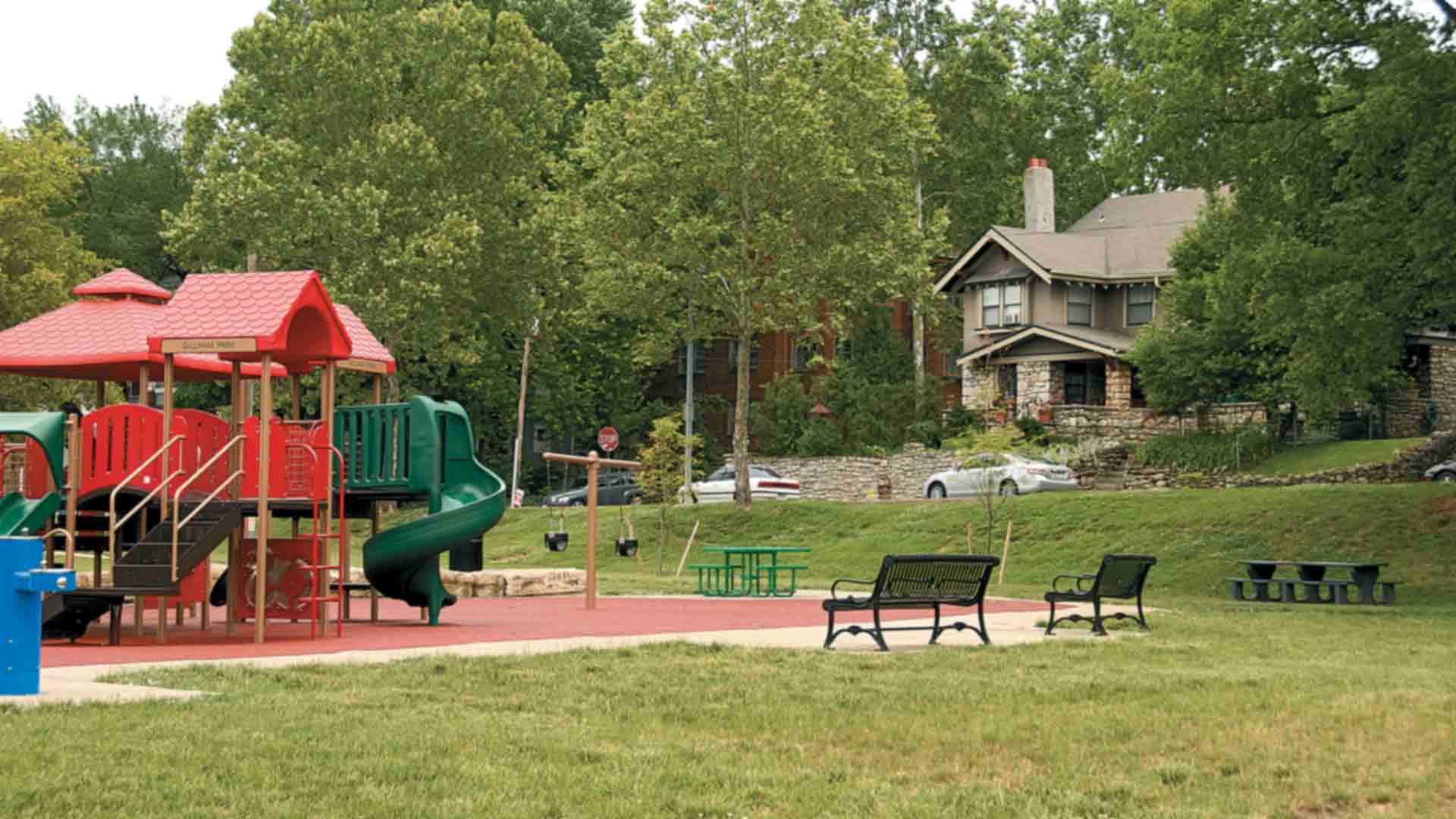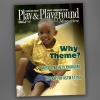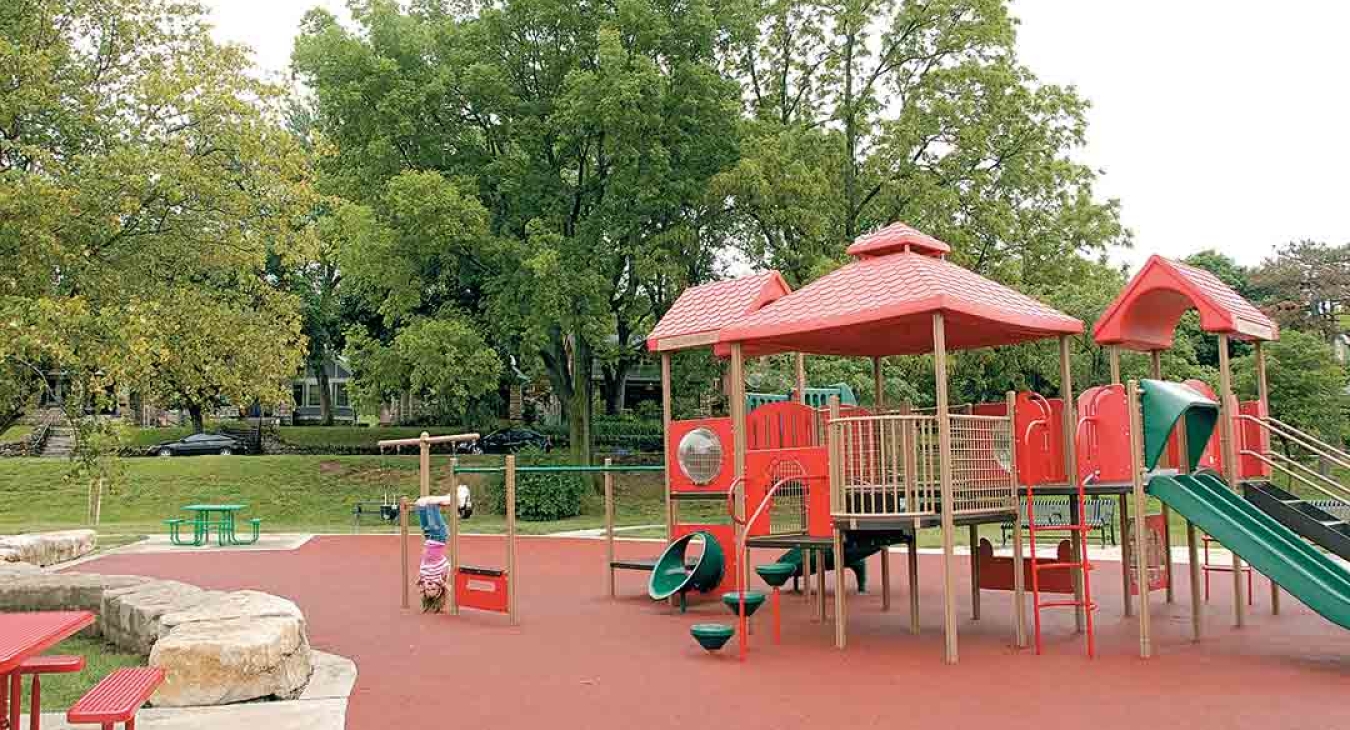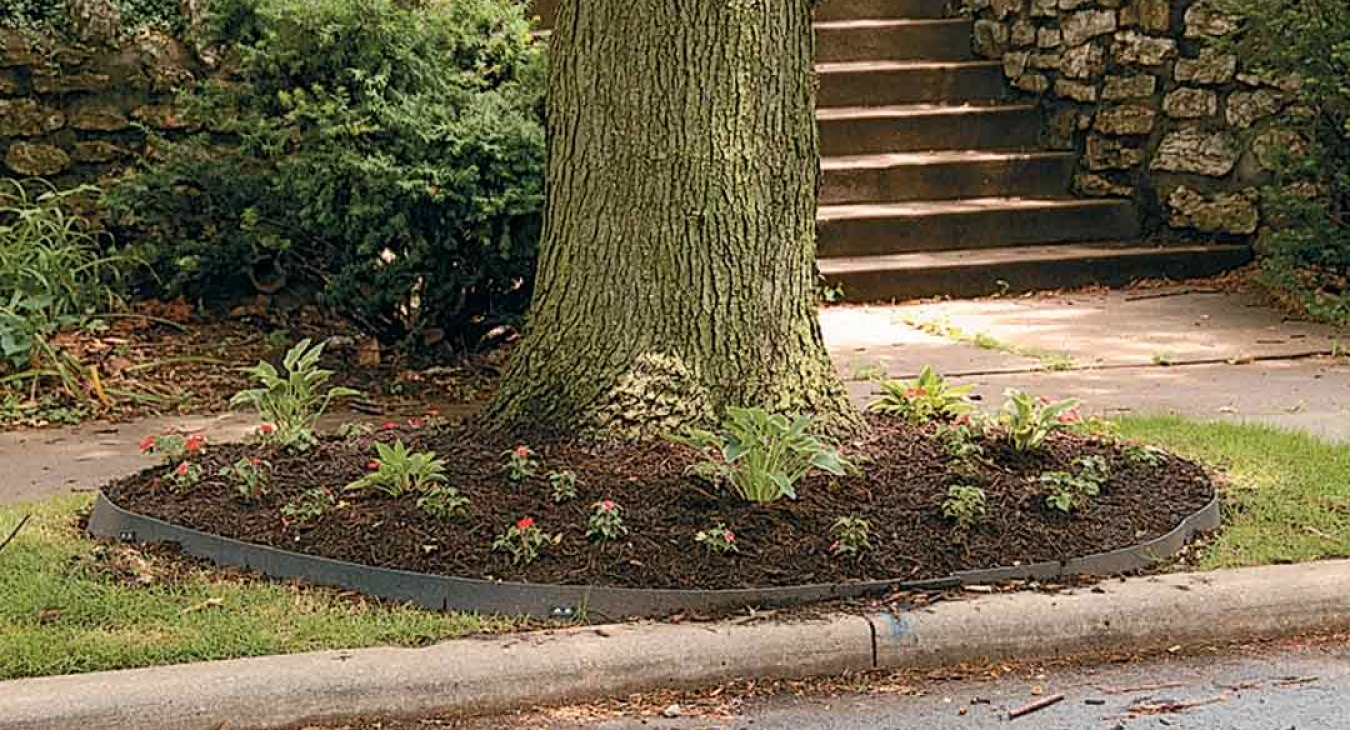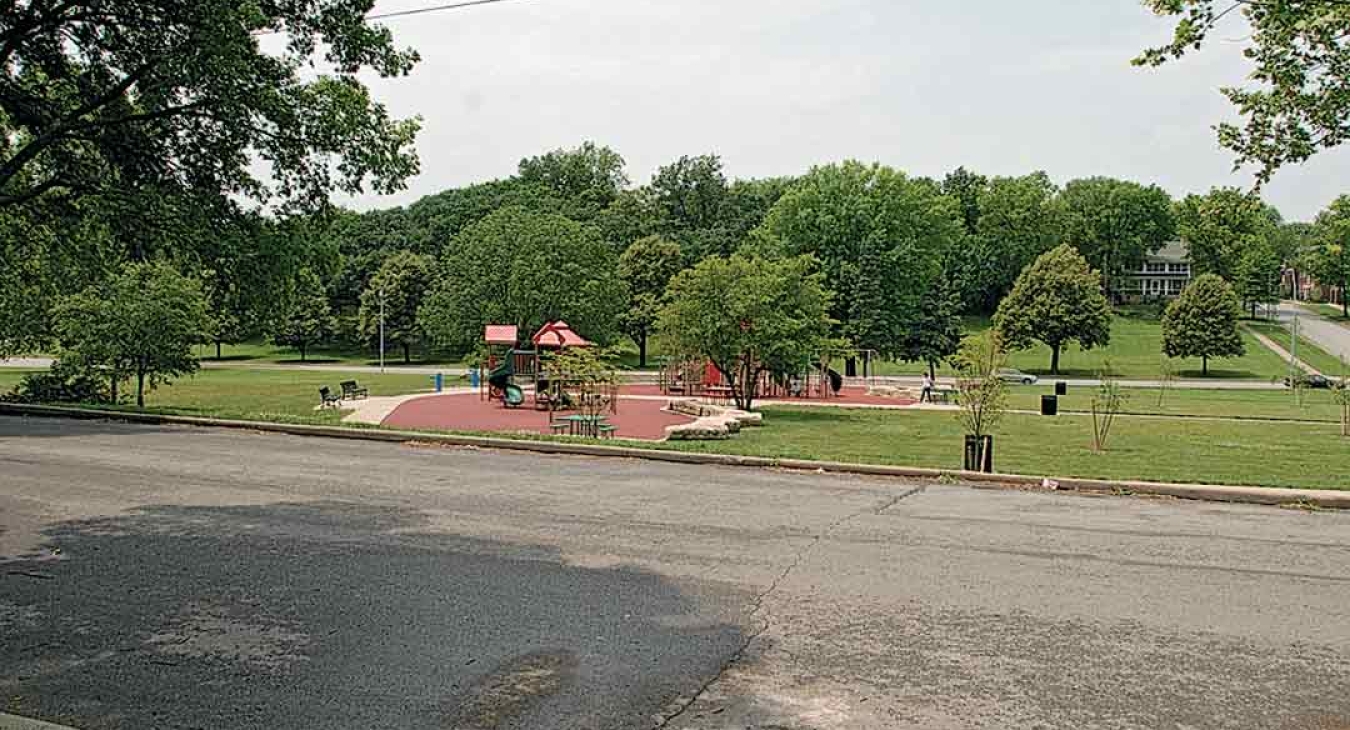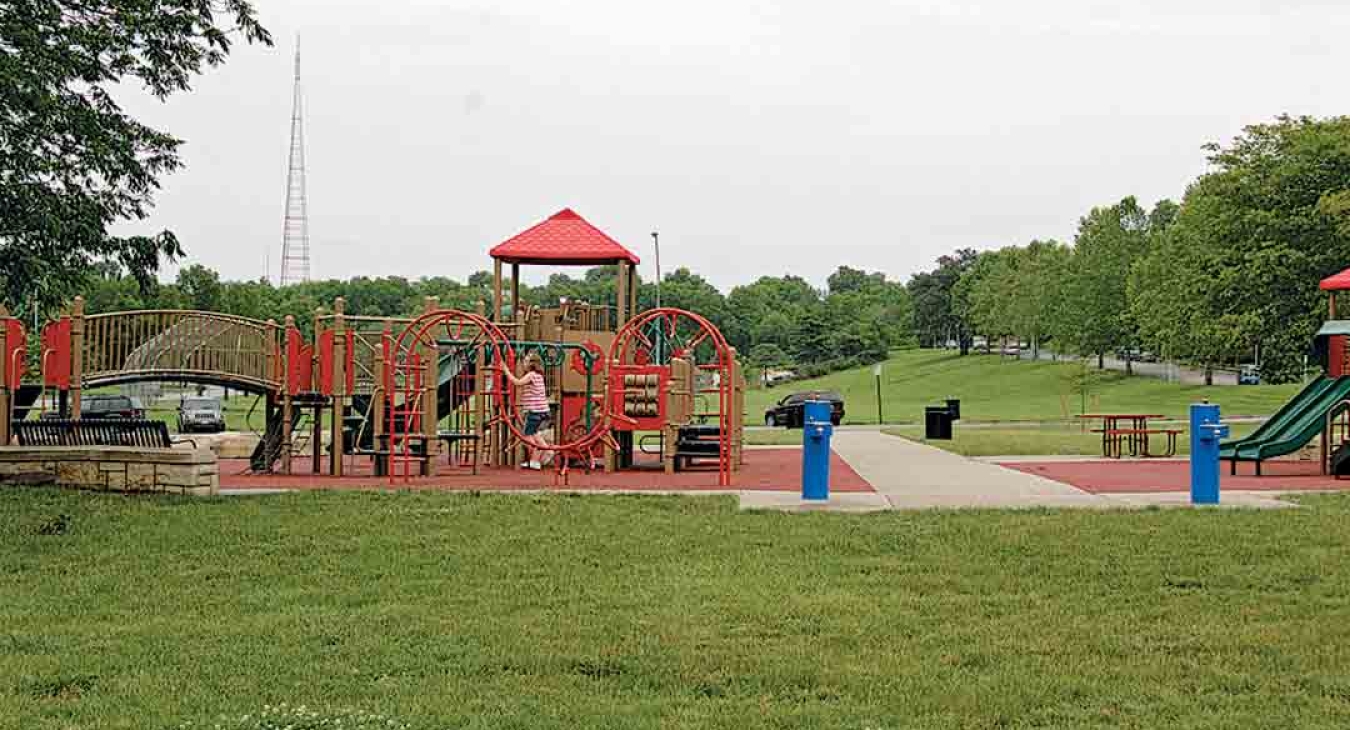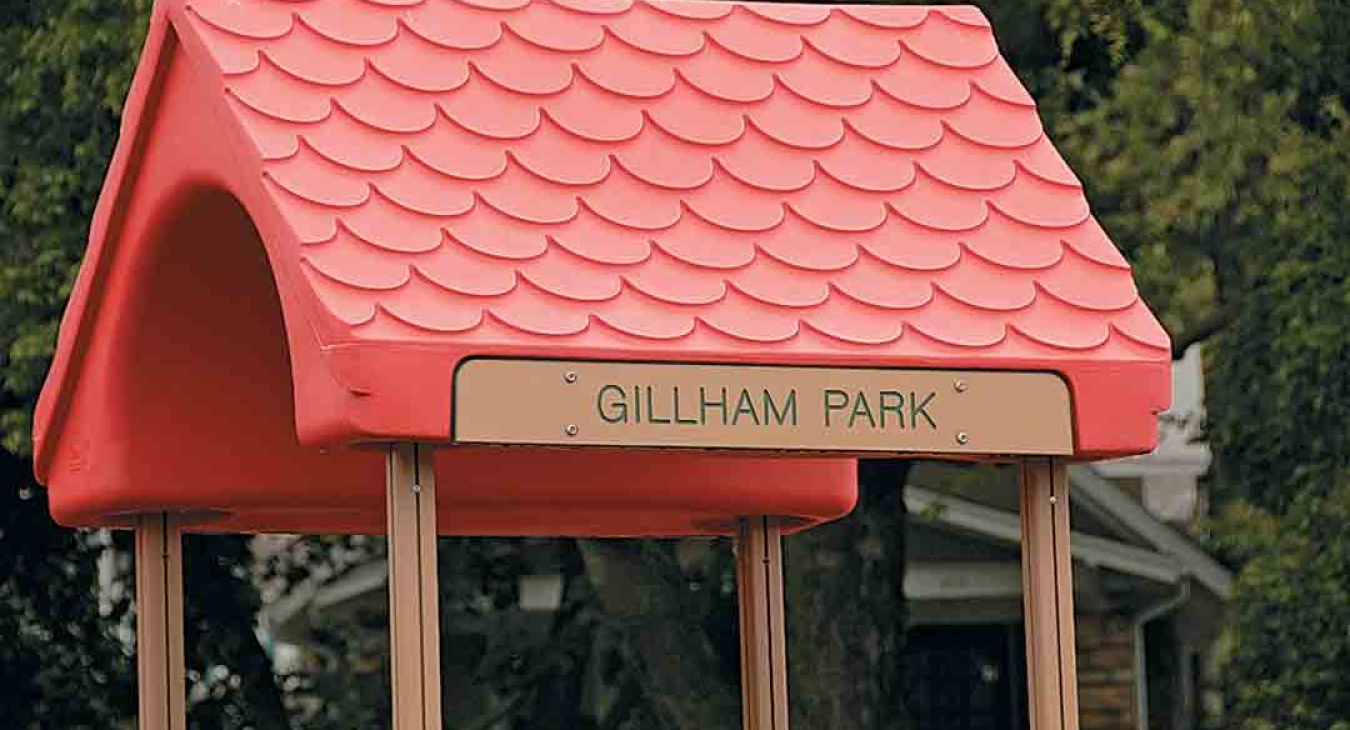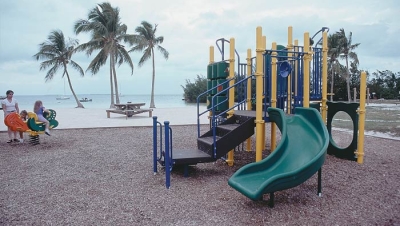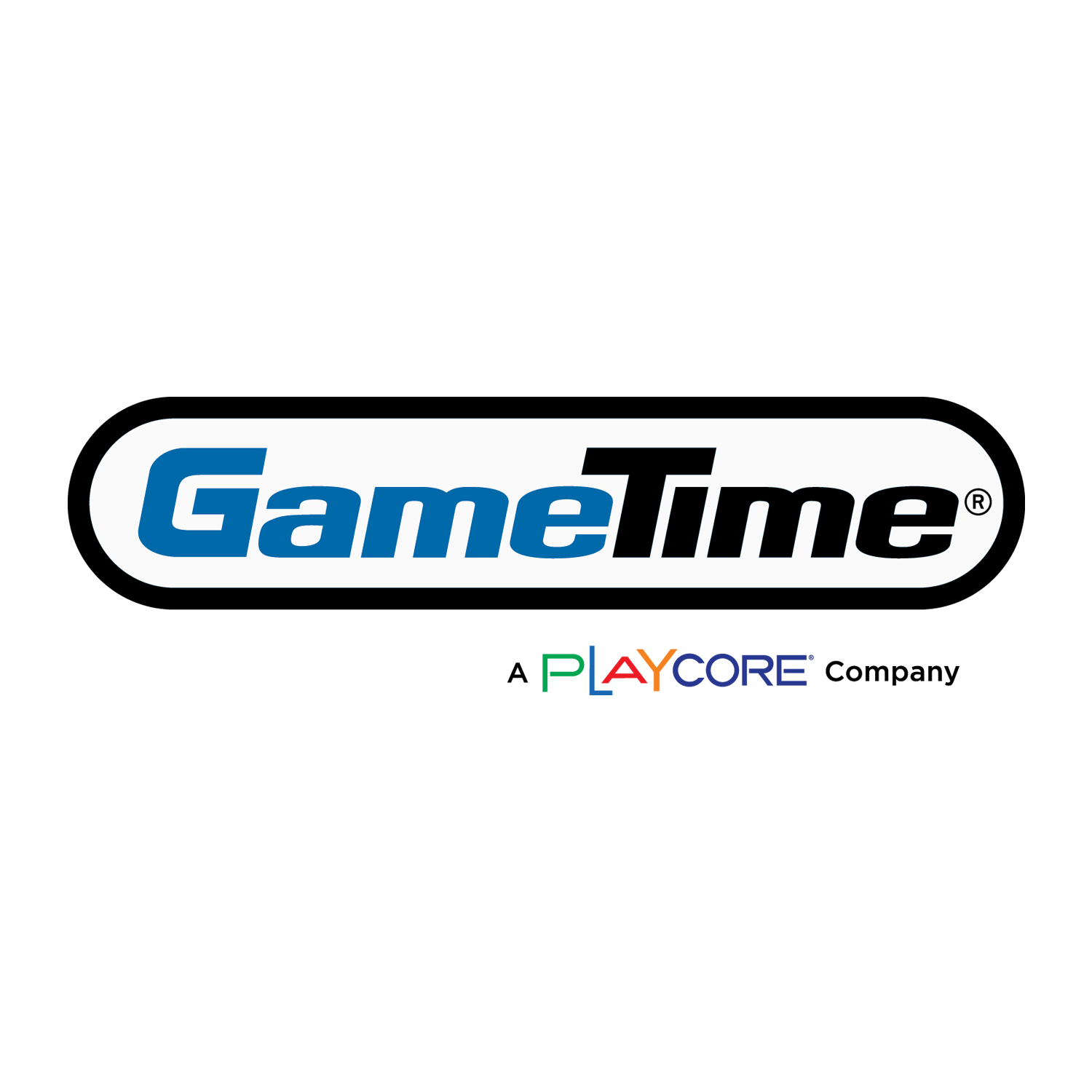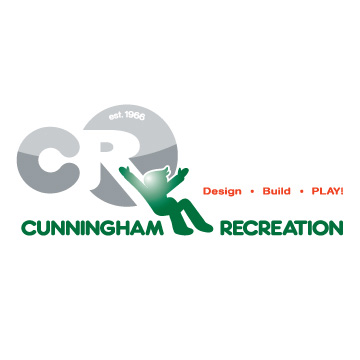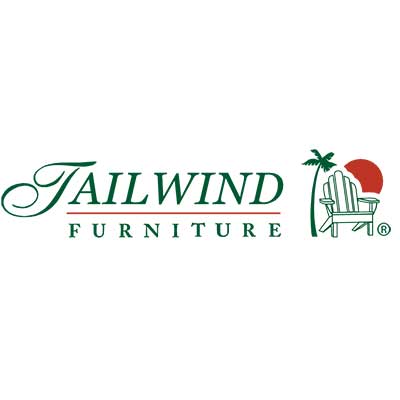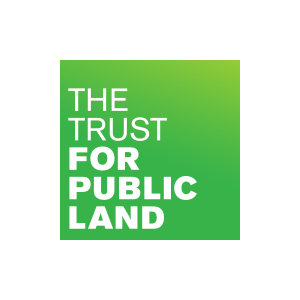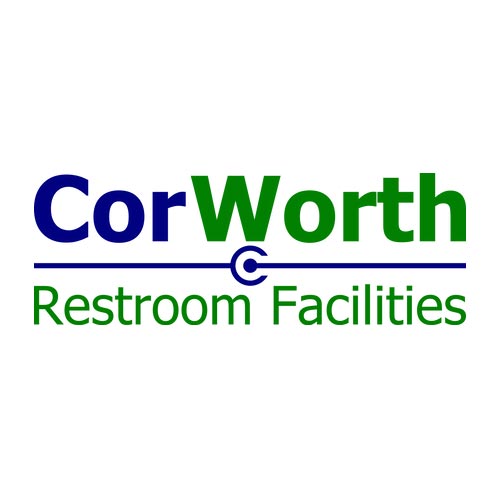“A Neighborhood Treasure”
Steve Lampone pointed toward the well-maintained homes, immaculate lawns, and flower gardens across Kenwood Avenue from Gillham Park.
“Parks can shape what surrounding areas look like,” Lampone, deputy director for Kansas City, MO, parks and recreation department, said.
He then turned his attention to Gillham Park, located in the Hyde Park section of Kansas City, just south of the downtown core. Gillham Park is one of the city’s success stories when it comes to parks and playgrounds. Lampone stressed how a nice park, with amenities such as a playground, can be a positive influence on the surrounding neighborhood. Indeed, as Lampone pointed out, parks become a neighborhood treasure and the pride of the area.
It wasn’t so long ago that Gillham Park was anything but the pride of the neighborhood.
Lampone described Gillham Park before its restoration as “tired, unattractive and unappealing.” He said, “It was not exciting. Nothing in this park was exciting from a man-made recreation standpoint.” And, he added, “We used to have a lot of homeless people in this park.”
To The Point
Local resident Roxana Shaffe was more to the point.
“It was a sand pit,” she said of Gillham Park’s days before 2005. “It was like a series of dunes. There was [play] equipment, but every single piece of equipment was broken or rusted, or the handles were broken. There were broken bottles, needles, used condoms, and trash everywhere. It was unclean, and it was unsafe.
“Because it was in such a state of disarray, no one would go there.”
Well, almost no one.
Shaffe explained, “Every night I would drive by the park, and there would be huge groups of people there. The park is not lighted, and there really was no playground equipment, so you knew they weren’t there for a good reason. When I would get home, I would call the police and ask them to go by [the park].”
But Shaffe, the mother of three children, age 6 and 4 years old, and 18 months old, has seen the park transformed into a vibrant greenspace teeming with people—people who had good reason to be there. She lived in the neighborhood surrounding the park in the 1990s before moving away. She moved back in 2002.
“It was frustrating to drive by this park every day to drive to another park thinking, ‘I could walk to this park.’”
Lampone said many of the area’s mothers felt the same way. “Mothers were saying, ‘Can’t we go closer to home in Kansas City for playground and parks?’”
Huge Expanse Of Green
How could they not feel that way, looking at the huge green expanse that stretches across nearly 59 acres? The 108-year-old Gillham Park is a linear park bordered on its north end by N. 39th Street and on the south by Brush Creek Blvd. Gillham Road borders the northwest portion of the park before the road dissects it and becomes the east border along the southeast side. Gillham Road and then Rockhill Terrace form the rest of the western border with Kenwood Avenue on the east.
Here was acre after acre of parkland that was virtually unused due to neglect of the playground and park, and an atmosphere not conducive to families.
Shaffe and others decided it was time to do something about it. “We have a strong parent group in the neighborhood,” Shaffe said. “We formed a group and everyone had a task.”
The group was the Friends of Gillham Park, and after it formed in late 2004 and early 2005, it worked for the next few years to see what improvements could be made to the park.
“We lobbied the city,” Shaffe said. “We had to go to lots of parks board meetings. We also had weekly park cleanups because that’s how much trash there was in the beginning. That was one of the criteria for our group. We had to show an interest in the park.”
Efforts Pay Off
The hard work by the Friends of Gillham Park, along with that of another group, the Gillham Park Improvement Project, paid off in 2007 when the park and playground were finished.
“It’s highly unlikely it would have happened without their involvement,” Lampone said of the two Gillham groups’ initiative to improve the park and put new play equipment in.
Lampone added, “Our capital budget can be influenced significantly by neighborhood groups.” He explained that KC Parks and Recreation can’t request funds from the Public Improvement Advisory Committee (PIAC), a program that uses tax dollars for a myriad of programs, including playgrounds and park improvements. But non-profits, such as Friends of Gillham Park and the Gillham Park Improvement Project, can make an appeal for money. The two groups were successful in their request to PIAC, and the funds were used for improvements to Gillham Park, which includes an impressive new Landscape Structures playsystem and a myriad of park upgrades.
The project cost $200,000, which includes the playground, new sidewalks, ADA compliance in several areas, and other amenities such as benches, a water fountain, and more.
“This playground is as fine as any in the city,” Lampone said.
Bad Gives Way To Good
The improvements and addition of a playground turned Gillham Park into a magnet for positive family fun and activities while diminishing unwanted behavior almost overnight.
Shaffe said she noticed the change right away. “There’s been a huge decline in crime right around the park,” she said.
“Now you see parents up and down every street pushing strollers, heading to the park.”
Lampone explained that the improvements and upgrades certainly have had a domino effect in eliminating crime and unwanted activities in the park while accentuating more family-oriented actions. He said, “The more positive activities you have, the fewer problems you’re going to experience, problems that discourage people from using [the park].”
Which brings us back to the point Lampone was making when he pointed to the beautiful homes across Kenwood Avenue from Gillham Park. “The park started looking much better. People noticed and started thinking, ‘We can live here.’”
Shaffe echoed Lampone’s sentiment about people thinking about living around the new and improved Gillham Park. “Just in the last 10 years, you see a group of people willing to stay here [in the neighborhood],” she said.
Park Is Adopted
It’s not just the neighbors who took notice of the improved condition of Gillham Park. Lampone explained, “Russell Stover Candies saw what was going on. The park started looking better, so Russell Stover Candies adopted the park. They’ve been able to give us a significant level of funding for added maintenance, to put trails in and install drinking fountains.”
As was reported in the Kansas City Star when Russell Stover Candies announced its support of the park in 2007, the funding will help “pay for litter collection five days a week, three applications of fertilizer a year, post-emergent weed control, aerification of the turf, overseeding twice a year and maintenance of trees and shrubs.”
From all appearances, 108-year-old Gillham Park, which Shaffe said was “in a state of ruination” when she first moved to the neighborhood, has a new lease on life and is indeed the pride of the area.
“I can’t think of anything more satisfying than seeing a park transform from one that was unattractive,” Lampone said. “It [Gillham Park] has become a neighborhood treasure.”

